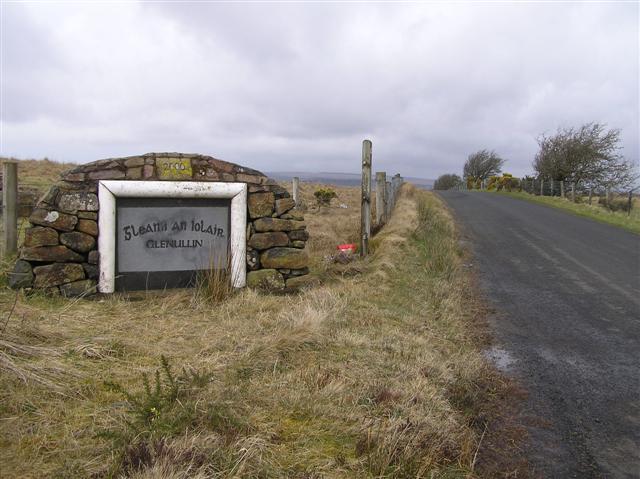Warning: contains topics that may cause an uneasy feeling. Advised to not read at night or rather with someone when easily feeling unsettled.
Ireland has many buildings that behold ghost stories, or well, paranormal ones. I’ve always been interested in such stories, including abandoned buildings. Sure, the question will always be the same: are such stories true? Multiple buildings have been visited by paranormal scientists, and they said it was true. In several parts, I’ll be telling all paranormal stories and the history of Ireland’s buildings! Today: part 5!
1. St Patrick’s Cathedral
The ghost of a black Newfoundland dog has often been seen sitting at the base of a life-sized marble statue of Captain John Boyd in the Cathedral. The dog lies on his master’s grave outside. The dog chose to starve to death at the grave rather than leave his master. In 1861, Captain Boyd, accompanied everywhere by his dog at his heels, became a hero when he organised the attempted rescue of more than 135 ships and their crews wrecked between Howth and Wicklow heads during a storm. Dún Laoghaire (then Kingstown) was a scene of carnage with bodies and wreckage everywhere, yet Boyd lashed himself to his crew and went to sea in a futile attempt to save lives. He drowned with his men.
/exterior-view-of-st--patrick-s-cathedral-in-dublin--ireland-184853945-5a64ecd37d4be80036fd2af1.jpg)
2. Coolbawn Castle/House
Some have seen an apparition staring down from the mullioned windows of the ruined 19th century Tudor Revival house (known as Bruen’s Folly after Francis Bruen, who built it for his bride). But it’s a servant girl who haunts it. On a stormy night, she was standing close to a window in one of the upper rooms to the east of the central porch tower when she was struck dead by lightning. The grim figure of her electrified body was burnt into the panes of glass for years after, until the house itself was burned down by the IRA. Yet even as the house crumbles, it’s said that the apparition is seen staring through glassless windows.

3. St Kevin’s Asylum
The tortured echoes of ghostly inmates have been heard and even recorded in the abandoned asylum, built in 1798 by William Saunders Hallaran, author of the first book on Irish psychiatry and inventor of Hallaran‘s Chair (a rotating chair that spun the hysterical patient at 100 revolutions per minute). The derelict portion of the complex is said to be haunted by the desperate souls who’re condemned to stay there, ‘living’ their lives.

4. Glenullin
Abhartach, the original male vampire (the first vampire legend in the world, as some say) is buried here, standing upright and upside down. Abhartach comes from laght-abhartach, (sepulchral monument of the dwarf) as this vicious blood-drinking, black magic-practising monster. The druids called him red blood sucker and said that he couldn’t be killed unless he was pierced with a sword made of yew wood, then buried head downwards. The locals give the bad ground around his grave a wide berth, especially after dark. Some say that Bram Stoker’s word Dracula comes from the Irish droch-fhola, pronounced droc‘ola, meaning bad blood.

5. Ballinagarde House
A sinister figure on horseback, said to be the devil or one of his dark apostles, is still seen around the mansion’s crumbling walls. Edward Gill Croker, part of Cromwell‘s New Model Army, started with status in 1730. But his worthless, arrogant and uneducated descendents who spawned many dark stories, had frittered the fortune away by 1869. One night, a mysterious dark rider appeared from nowhere on the road by Edward Croker’s carriage. The man started a conversation, which resulted in a dinner invitation to Ballinagarde. When the drunken stranger collapsed in the morning, a servant removed his boots to reveal hairy cloven feet, and hoof-marks seared into the floor by red hot feet.
That’s it for part 5! Which story had you heard before? And which one seems the most ‘creepy’ to you?
Love, Deem/Skye Lewis ❤
You can also follow me on Facebook, Twitter, Instagram and Twitch

I can’t stop loving such stories ^^
LikeLiked by 1 person
Haha me neither!
LikeLike
Creepy as always
LikeLiked by 1 person
A little yeah!
LikeLike
I never wanna go to 3. Those poor people…
LikeLiked by 1 person
I know, it’s awful..
LikeLike
Horrifying, yet fascinating
LikeLiked by 1 person
Best way to describe this
LikeLike
Excited for the next one 😀
LikeLiked by 1 person
Me too!
LikeLike
Every time you upload a new part, I’m afraid it’ll be the last one haha
LikeLiked by 1 person
Haha soon it will though!
LikeLike